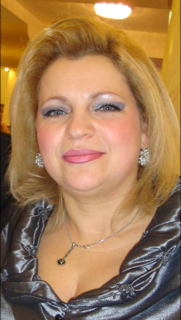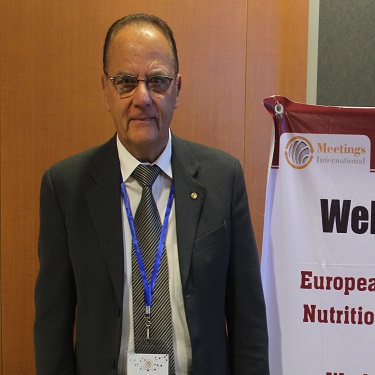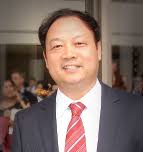Scientific Program
Keynote Session:
A PHP Error was encountered
Severity: 8192
Message: trim(): Passing null to parameter #1 ($string) of type string is deprecated
Filename: pastconference/past-program-schedule.php
Line Number: 239
Backtrace:
File: /efsdata/meetingsint-com/application/views/pastconference/past-program-schedule.php
Line: 239
Function: trim
File: /efsdata/meetingsint-com/application/controllers/Pastconference.php
Line: 128
Function: view
File: /efsdata/meetingsint-com/index.php
Line: 317
Function: require_once
Title: The positive effect of VIT on other allergies
Biography:
Leonora Hana-Lleshi ,MD allergist-immunologist G.H."Isa Grezda"Gjakova,Kosovo. (Born on 03/01/71-mm/dd/yy) in Gjakova,Kosovo). 1990-1996 certified as GP in the University of Medicine and Pharmacy Craiova,Romania). 2001-2005 certified as specialized allergist-immunologist in UCCK-Prishtina,Kosova. 2004-6 months I was in UHC”Mother Theresa”Tirana , Albania in training in field of clinical allergology. 2012- certified as Master degree in Medical Science. I'm a supporter of WAD in our local area organizing local conferences supported by KIAAA and by GINA PI of GAN -Global Asthma Network project in Gjakova Kosovo. My goal of investigation is about the positive effect of Venom Immunotherapy on other allergies also too to offer the best for the. treatment of allergy sufferers.
Abstract:
Hymenoptera venom allergy (HVA) is an immunoglobulin E (IgE)-mediated hypersensitivity, which includes the anaphylacticshock. Venom immunotherapy (VIT) is the etiologic treatment of the HVA with 75-98% efficacy.
Objective: To study the role of VIT on the other IgE-mediated sensitizations on HVA patients.
Material and methods:
Three patients, one female 12 ,one boy 15 and one male 28 years old, resulted hymenoptera venom, pollens ad mites respectively due to intradermoreaction and prick test, and confirmed by specific IgE detection. They were subcutaneously treated with VIT because of their HVA, beginning with solution 1mcg/ml, than 10 and 100mcg/ml (Apis mellifera, L-tyrosine solution, ANNALLERGO). The maintenance dose of 100mcg was reached in 15 weeks in a cluster schedule, and the treatment continued every 4 weeks along 5 years or more. Generally, our patients have supported very well the VIT.
Results/discussion:
The annual patients’ analysis of the specific IgE revealed a continuous level reduction not only for the bee venom but also for other allergens (pollens and mites) along 3 consecutive years of VIT.
Conclusion:
Our findings suggest that VIT may have a significant role on the improvement of other IgE-mediated allergies. However, the role of VIT should be confirmed throughfurther studies and clinical/laboratory parameters.
A PHP Error was encountered
Severity: 8192
Message: trim(): Passing null to parameter #1 ($string) of type string is deprecated
Filename: pastconference/past-program-schedule.php
Line Number: 239
Backtrace:
File: /efsdata/meetingsint-com/application/views/pastconference/past-program-schedule.php
Line: 239
Function: trim
File: /efsdata/meetingsint-com/application/controllers/Pastconference.php
Line: 128
Function: view
File: /efsdata/meetingsint-com/index.php
Line: 317
Function: require_once
Title: ACE Immune / ACE Immune plus New potent soldier in the immunity army fighting against cancer
Biography:
Alaa Abdelkarim is currently working in a ACE cells Lab Limited. Nottingham - United Kingdom he is also Consultant Endocrinology and Stem Cell Therapy and completed his MBBCH (Cairo University) - MRCGP INT (London) and MRCP UK London SEC Endocrine & Diabetes. He is Member of the European Society for Endocrinology and Member of the International Society for Stem Cell Research.
Abstract:
With the failure of the conventional methods to control the cancer, and with the growing doubts about the researches done for the chemotherapy and its numerous negative effects on the body as a whole and the feasibility of these researches, The latest research results suggest that tumor- infiltrating leukocytes and the intra-tumoural cytokine environment play a central role in both the genesis and development of cancer. Over a hundred years ago, Virchow pointed out that numerous immune cells occur in the vicinity of practically all malignant tumours and that the structure of tumour tissue closely resembles the inflamed region of a non- healing wound. With the aid of the latest molecular and cell- biological methods, we are not only able today to closely chcharacterize tumour cells and their immediate vicinity but also the other cell types present in tumour tissue, such as infiltrating immune cells, endothelial cells, connective tissue cells and others, both in terms of phenotype and function. In addition, there is growing understanding of the significance of the composition and functioning of endogenous messenger substances such as cytokines, chemokines and prostaglandins in healthy and malignantly altered tissues. From the immunological point of view, the main characteristics are dysregulated inflammatory conditions caused by the tumour cells themselves or by external factors, depending on the type of tumour event. It is evident that prolonged dysregulated inflammatory conditions favour not only carcinogenesis but also the local infiltration and metastasis of malignantly modified cells and counteract the development of efficient antitumor immunity. 1
ACE Immune comes in harmony with the recent researches in developing a third dimension to the war of cancer. There are lots of researches and patents on some allogeneic products that can help in fighting cancer, ACE immune as a potent natural formula enhances the defense lines and regenerate the whole immune system and help in the bio regulation of the hormonal system.
ACE immune and Auto-immune diseases:
In a primary study to monitor the effect of ACE IMMUNE on the inflammatory marker hs-CRP in 20 patients after using primary course of sublingual daily 3 times doses of ACE IMMUNE.
- 2 patient did not continue the study for different reasons.
- 18 patients continued the study till the end.
- The safety investigations (Full liver function, full kidney function and Complete blood picture were done to the patients before starting the course of treatment and after the last dose. No one showed any deterioration in any of the safety markers.
- hs-CRP was measured to the 18 patients and was ranging in all the patients between 12- 18.
- In the last week of administering the ACE immune, hs-CRP was re-tested and was less than 5 in all the patients.
- Conclusion: ACE Immune could participate in controlling one of the rheumatoid arthritis inflammatory factors in 12 weeks of the administration.
- More researches and studies needed to confirm the effect on the inflammatory reactions of Rheumatoif arthritis.
A PHP Error was encountered
Severity: 8192
Message: trim(): Passing null to parameter #1 ($string) of type string is deprecated
Filename: pastconference/past-program-schedule.php
Line Number: 239
Backtrace:
File: /efsdata/meetingsint-com/application/views/pastconference/past-program-schedule.php
Line: 239
Function: trim
File: /efsdata/meetingsint-com/application/controllers/Pastconference.php
Line: 128
Function: view
File: /efsdata/meetingsint-com/index.php
Line: 317
Function: require_once
Title: Title: Toward a new kind of Vaccine: A logical extension of the symmetrical immune network theory
Biography:
Mr. Hoffmann is entirely dedicated to Network Immunology's systems approach to treating disease and optimizing health. Realizing the immense untapped value in the network approach to understanding immuno-regulation, Hoffmann co-founded Network Immunology with Chief Scientist, Dr. Geoffrey W. Hoffmann in 2003. In 2007, Hoffmann was appointed Manager of Business Development. In 2009, at a key juncture in the Company’s history, he was appointed President and CEO. Since then he has been a major driver behind the Company's development and expansion.
Abstract:
Background: The symmetrical immune network theory, developed in 1975, is based on the existence of specific T cell factors and hypothesizes that normal IgG immune responses comprise the production of 2 kinds of antibodies, namely antigen-specific antibodies and anti-idiotypic antibodies.
Objective: The aim of this study was to confirm the existence of specific T cells factors and to show that immunization of C3H mice with BL/6 skin or using nominal antigen for immunization (Tetanus Toxoid) induced production of antigen-specific (anti-BL/6 or antitetanus) antibodies plus anti-idiotypic antibodies (C3H anti-anti-C3H). Subsequently, we investigated the role of combinations of antigen-specific and anti-idiotype antibodies in a variety of animal models of clinical diseases.
Methods: Antigen-specific antibodies were produced by conventional immunization of mice (eg, with tetanus toxoid or by skin allografting). Subsequent anti-idiotypic antibodies were derived by exhaustive absorption of antigen-specific antibody, with confirmation of anti-idiotypic specificity by binding to relevant target antigen-specific antibodies in an enzyme-linked immunosorbent assay (ELISA). Antigen-specific plus anti-idiotypic antibodies were then used to modulate skin allograft survival, dextran sulfate sodium (DSS)-induced colitis, ovalbumin (OVA)-induced IgE production, and breast cancer growth in mice.
Results: Infusions of anti-BL/6 antibodies together with BL/6 anti-anti-BL/6 antibodies specifically suppressed (>85%) an immune response to BL/6 lymphocytes in C3H mice. The two kinds of antibodies with complementary specificity are hypothesized to stimulate 2 populations of T lymphocytes. Coselection of these 2 populations leads to a new stable steady state of the system with diminished reactivity to BL/6 tissue. A combination of anti-C3H and C3H anti-anti-C3H IgG antibodies down-regulated inflammation in a mouse model of inflammatory bowel disease (>75%) and attenuated anti-IgE production and sensitization to produce IL4 cytokines (>70%) in an OVA-allergy model. Combination of C3H anti-BL/6 and BL/6 anti-anti-BL/6 antibodies decreased tumor growth and metastases (>705) in an EMT6 transplantable breast cancer model.
Conclusions: Use of a combination of antigen-specific and anti-idiotypic antibodies has potential as a new class of vaccines.
A PHP Error was encountered
Severity: 8192
Message: trim(): Passing null to parameter #1 ($string) of type string is deprecated
Filename: pastconference/past-program-schedule.php
Line Number: 239
Backtrace:
File: /efsdata/meetingsint-com/application/views/pastconference/past-program-schedule.php
Line: 239
Function: trim
File: /efsdata/meetingsint-com/application/controllers/Pastconference.php
Line: 128
Function: view
File: /efsdata/meetingsint-com/index.php
Line: 317
Function: require_once
Title: Toward a new kind of Vaccine: A logical extension of the symmetrical immune network theory
Biography:
Dr. Gershom holds a PhD in Pathology & Laboratory Medicine from the University of British Columbia, Canada, an MSc in Biochemistry from the University of Sussex, UK, and an M.Sc in Microbiology & Immunology from the University of Mumbai, India. Edwin has strong biomedical research experience, working on basic and clinical projects in academic & government hospital settings. He is effective in communicating with both science and general audiences, building cooperative relationships to achieve set goals. He understands the burden of infectious disease and is committed to developing and advancing new therapeutics from lab to clinic. For his PhD, he demonstrated virus-mediated activation of host hemostatic proteins as the biochemical basis of clinical correlation of virus infection to vascular diseases.
Abstract:
Background: The symmetrical immune network theory, developed in 1975, is based on the existence of specific T cell factors and hypothesizes that normal IgG immune responses comprise the production of 2 kinds of antibodies, namely antigen-specific antibodies and anti-idiotypic antibodies.
Objective: The aim of this study was to confirm the existence of specific T cells factors and to show that immunization of C3H mice with BL/6 skin or using nominal antigen for immunization (Tetanus Toxoid) induced production of antigen-specific (anti-BL/6 or antitetanus) antibodies plus anti-idiotypic antibodies (C3H anti-anti-C3H). Subsequently, we investigated the role of combinations of antigen-specific and anti-idiotype antibodies in a variety of animal models of clinical diseases.
Methods: Antigen-specific antibodies were produced by conventional immunization of mice (eg, with tetanus toxoid or by skin allografting). Subsequent anti-idiotypic antibodies were derived by exhaustive absorption of antigen-specific antibody, with confirmation of anti-idiotypic specificity by binding to relevant target antigen-specific antibodies in an enzyme-linked immunosorbent assay (ELISA). Antigen-specific plus anti-idiotypic antibodies were then used to modulate skin allograft survival, dextran sulfate sodium (DSS)-induced colitis, ovalbumin (OVA)-induced IgE production, and breast cancer growth in mice.
Results: Infusions of anti-BL/6 antibodies together with BL/6 anti-anti-BL/6 antibodies specifically suppressed (>85%) an immune response to BL/6 lymphocytes in C3H mice. The two kinds of antibodies with complementary specificity are hypothesized to stimulate 2 populations of T lymphocytes. Coselection of these 2 populations leads to a new stable steady state of the system with diminished reactivity to BL/6 tissue. A combination of anti-C3H and C3H anti-anti-C3H IgG antibodies down-regulated inflammation in a mouse model of inflammatory bowel disease (>75%) and attenuated anti-IgE production and sensitization to produce IL4 cytokines (>70%) in an OVA-allergy model. Combination of C3H anti-BL/6 and BL/6 anti-anti-BL/6 antibodies decreased tumor growth and metastases (>705) in an EMT6 transplantable breast cancer model.
Conclusions: Use of a combination of antigen-specific and anti-idiotypic antibodies has potential as a new class of vaccines.
Oral Session 1:
- Nanotechnology|Nanomedicine|Materials science in Nanotechnology| Allergy & Asthma | Food and Skin allergy | Clinical Immunology & Paediatric Allergy | Dermatology and Aesthetic Medicine | Gastrointestinal immunology & Ocular

Chair
Adelina Shehu Kola
Health Social and Welfare Municipality- Kosovo
A PHP Error was encountered
Severity: 8192
Message: trim(): Passing null to parameter #1 ($string) of type string is deprecated
Filename: pastconference/past-program-schedule.php
Line Number: 354
Backtrace:
File: /efsdata/meetingsint-com/application/views/pastconference/past-program-schedule.php
Line: 354
Function: trim
File: /efsdata/meetingsint-com/application/controllers/Pastconference.php
Line: 128
Function: view
File: /efsdata/meetingsint-com/index.php
Line: 317
Function: require_once
Title: G.I.T Immunology
Biography:
Jean-Marie poffe completed his pharmacist degree in 1976 at UCL (Brussels). In 1977, he obtained his certificate of pharmacist specialized in clinical bacteriology. For 20 years he has practiced the profession of pharmacist in his own pharmacy. Later he did specialization in nutrition and micro-nutrition and from 2005, he had started his consultations.
Abstract:
We will start with a histological reminder of the Gastrointestinal tract (GIT) membrane and its constituents. We will then talk about the GIT as immunologic membrane = GALT. We will review the consequences of so-called diseases of civilization. (intolerances, allergies, MIC). Then we will talk about the immune response, the differentiation of lymphocytes, the secretion of IgA, auto-illunes, the interest of pre-biotics and pro-biotics, the existing relationship between pro-biotics and immunity. It is concluded as the vital importance of the good functioning of the GIT for the well-being of patients.
A PHP Error was encountered
Severity: 8192
Message: trim(): Passing null to parameter #1 ($string) of type string is deprecated
Filename: pastconference/past-program-schedule.php
Line Number: 354
Backtrace:
File: /efsdata/meetingsint-com/application/views/pastconference/past-program-schedule.php
Line: 354
Function: trim
File: /efsdata/meetingsint-com/application/controllers/Pastconference.php
Line: 128
Function: view
File: /efsdata/meetingsint-com/index.php
Line: 317
Function: require_once
Title: Immunotherapy of cancer: Some up-to-date approaches
Biography:
Krassimir Metodiev has over 300 published papers in international journals, as well as over 100 participations in congresses, conferences and symposia world-wide. His expertise is immunology of organ transplantation, immunology of cancer, immunodeficiency, risk infections and bioterrorism, clinical microbiology, immunologic monitoring of post-transplant periods, etc. He is a member of a number of international societies and organizations, President of IMAB, Vice-Ptesident of FESCI, Board member of ISC, ICHS, ESAO/ISAO, member of ESCMID, EANO, etc. Member of the Board of several international journals.
Abstract:
Treatment of cancer is currently based on three main modalities: surgery, radiotherapy and chemotherapy. Most solid tumours can only be cured at an early stage, due to the lack of effective systemic treatment. Surgery and radiotherapy are highly effective for eradicating localized tumours, but unfortunately cannot target disseminated disease. Chemotherapy represents systemic treatment, but the clinical use of current drugs is to a large extent hampered by their limited specificity. Over the last two decades, immunotherapy has emerged as an interesting novel approach. Contrary to the traditional treatment modalities, the immune system combines inherent specificity with a systemic range of action. The term “vaccine” is traditionally used to describe substances that protect against the development of infectious diseases. In cancer therapy this term refers to both therapeutic and prophylactic approaches for eliciting immunological and anti-tumour responses. Prophylactic vaccines have only been developed in a few cancer forms, mainly cancers related to viral infection, such as cervical and hepatocellular carcinoma. Therapeutic vaccines, given to patients after the development of the disease, are however investigated in a number of cancer forms. Some of the therapeutic vaccines may also be used for prophylaxis, particularly in patients with increased risk of cancer process. This presentation throws light and depicts the international experience of a number of distinguished researchers in the field of development and testing of vaccines against some tumours, mainly malignant melanoma and prostate cancer. The author analyzes the experience and the research projects worked out in the Dept. Cell Therapy of the University hospital Radium (Inst. Cancer Research, Oslo, Norway) by the team of Prof. Gunnar Kvalheim, Prof. Jon Amund Kyte, Prof. Jahn Nesland, the Bulgarian immunologist Biol. Paula Lazarova and the author himself for the last several years. The colleagues from Radium have utilized gene-transfer technology for developing vaccine therapy with dendritic cells transfected with tumour-mRNA. These vaccines are designed to combine the immunostimulatory capacity of dendritic cells with the antigen repertoire of tumour cells. There are two approaches to the project: preclinical/experimental evaluation and clinical trials on patients, which are thoroughly discussed in the present paper.
A PHP Error was encountered
Severity: 8192
Message: trim(): Passing null to parameter #1 ($string) of type string is deprecated
Filename: pastconference/past-program-schedule.php
Line Number: 354
Backtrace:
File: /efsdata/meetingsint-com/application/views/pastconference/past-program-schedule.php
Line: 354
Function: trim
File: /efsdata/meetingsint-com/application/controllers/Pastconference.php
Line: 128
Function: view
File: /efsdata/meetingsint-com/index.php
Line: 317
Function: require_once
Title: Systematic health visits for high school students of the Gjakova Municipality, year 2018/2019
Biography:
Adelina Shehu-Kola work as a Director of Health Social and Wellfare Municipality Gjakova she research in sistemic regulary examination at the age 15-18 years in all our local primary schools realized in 2019.
Abstract:
The Municipal Directorate for Health and Social Welfare, through the Gjakova Primary Health Care system, as a part of organized health care for children of the Gjakova region, have organized successfully systematic health visits for the high schools students . This activity is organized under the motto “Healthy youth is future of the country”. Work methodology. This activity is implemented by the 15 medical teams. Each team was composed by one Family Medicine doctor, 2 Family Medicine nurses, a Dentist and one Dentist nurse (technician). For completion of these systematic visits were engaged the 75 health care staff and were served about 10598 school children (age 15-17 years old). Purpose. To follow growth and psycho-physical development of school children in order to identify in early stage various deformities and anomalies and age specific diseases, and toundertake appropriate prophylactic and rehabilitation measures. Results. During these visits were identified children with obesity (21%), with cardiovascular diseases (12%), with lung diseases (32%), with impaired vision (24%), with chest deformities (21%), with abdominal pathology (1%), etc.









